Graphics and Storage Performance
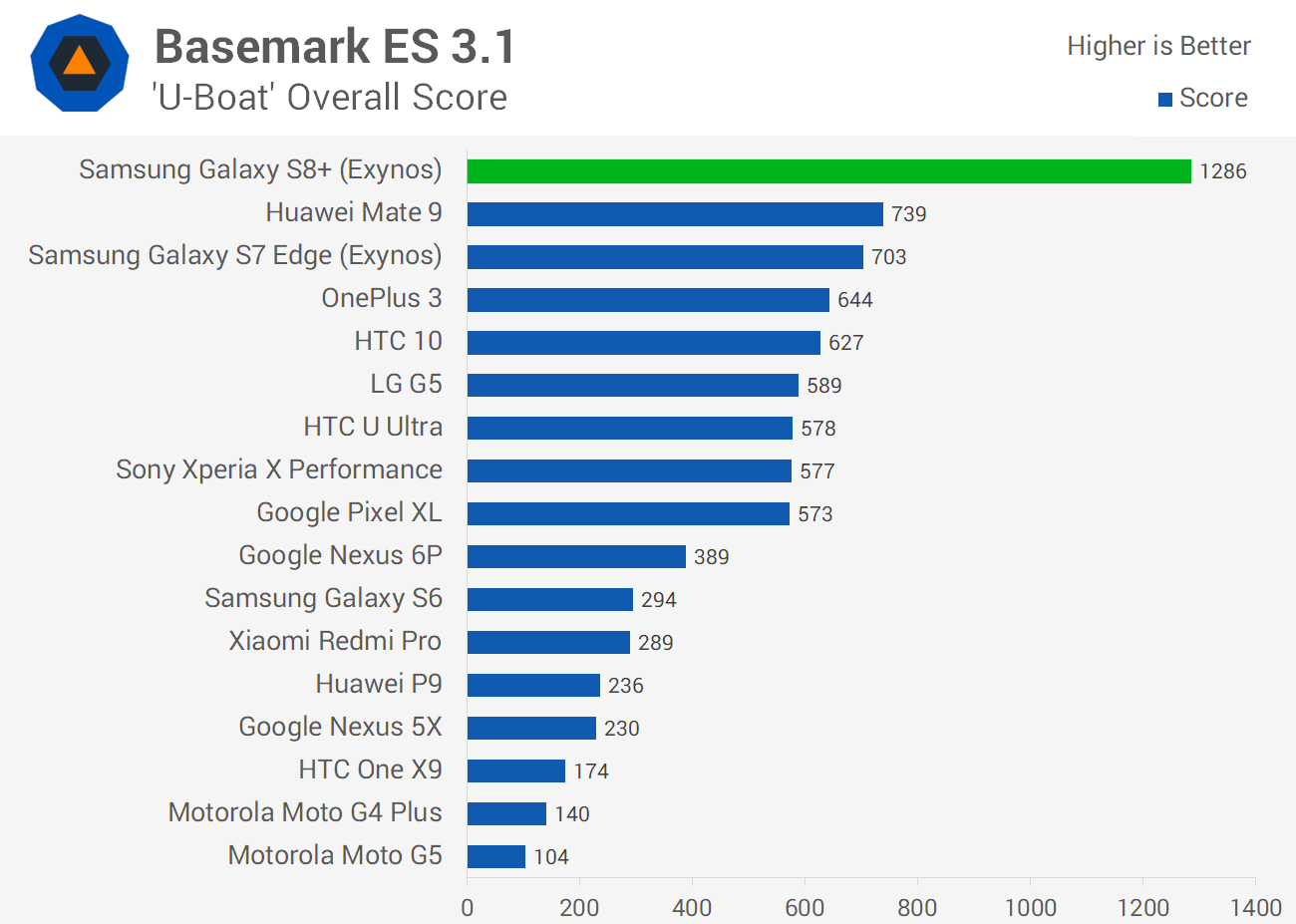
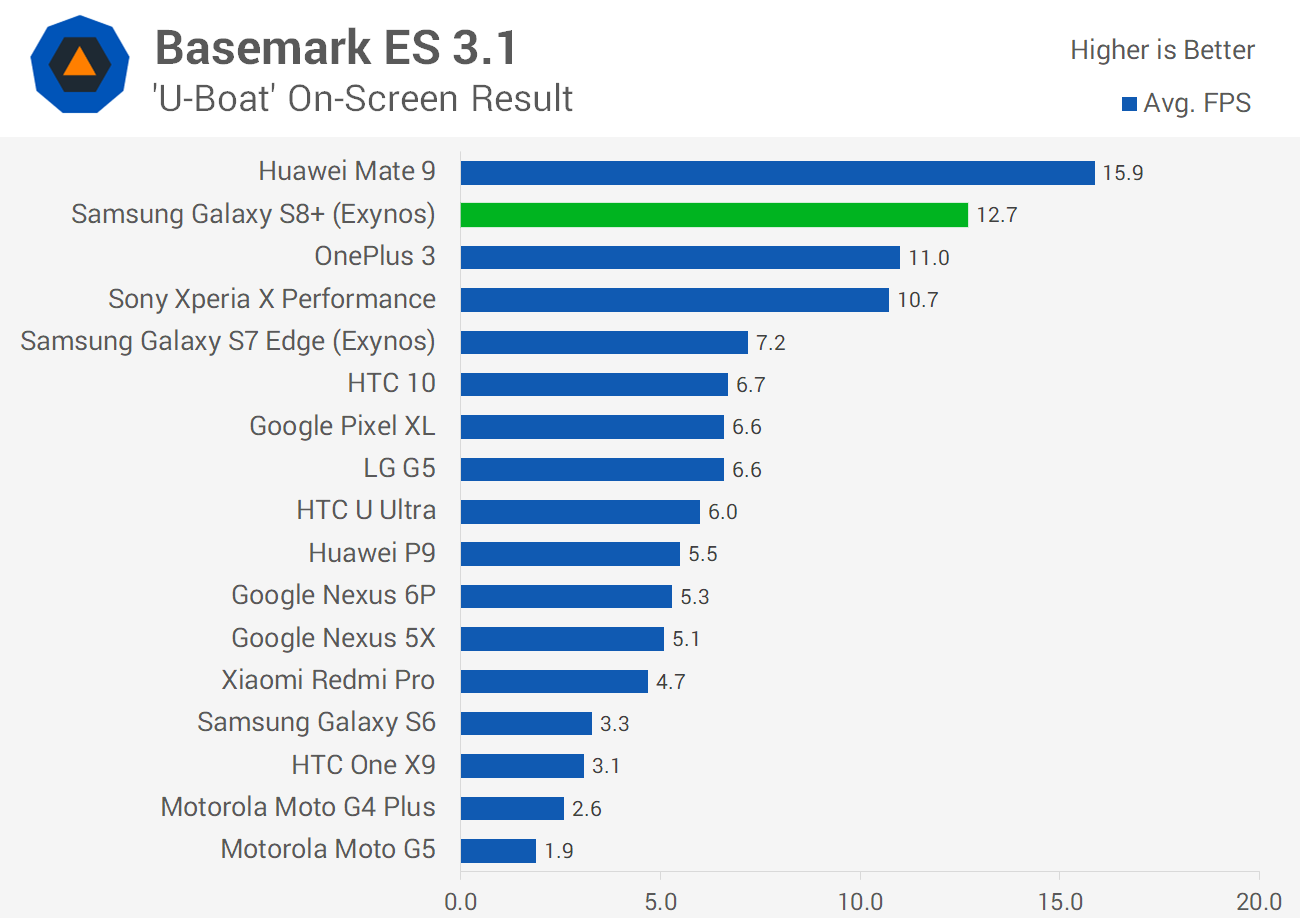
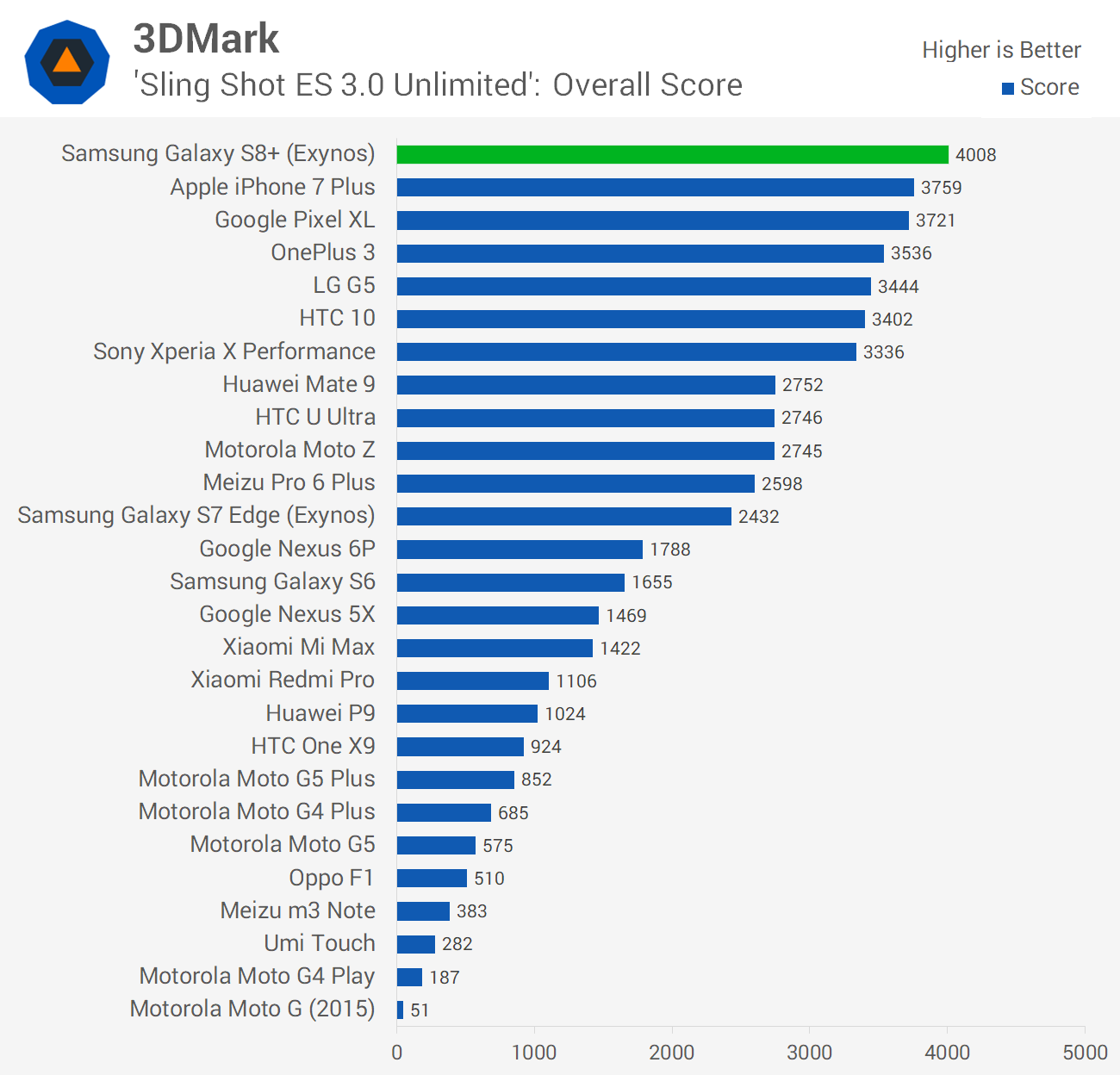
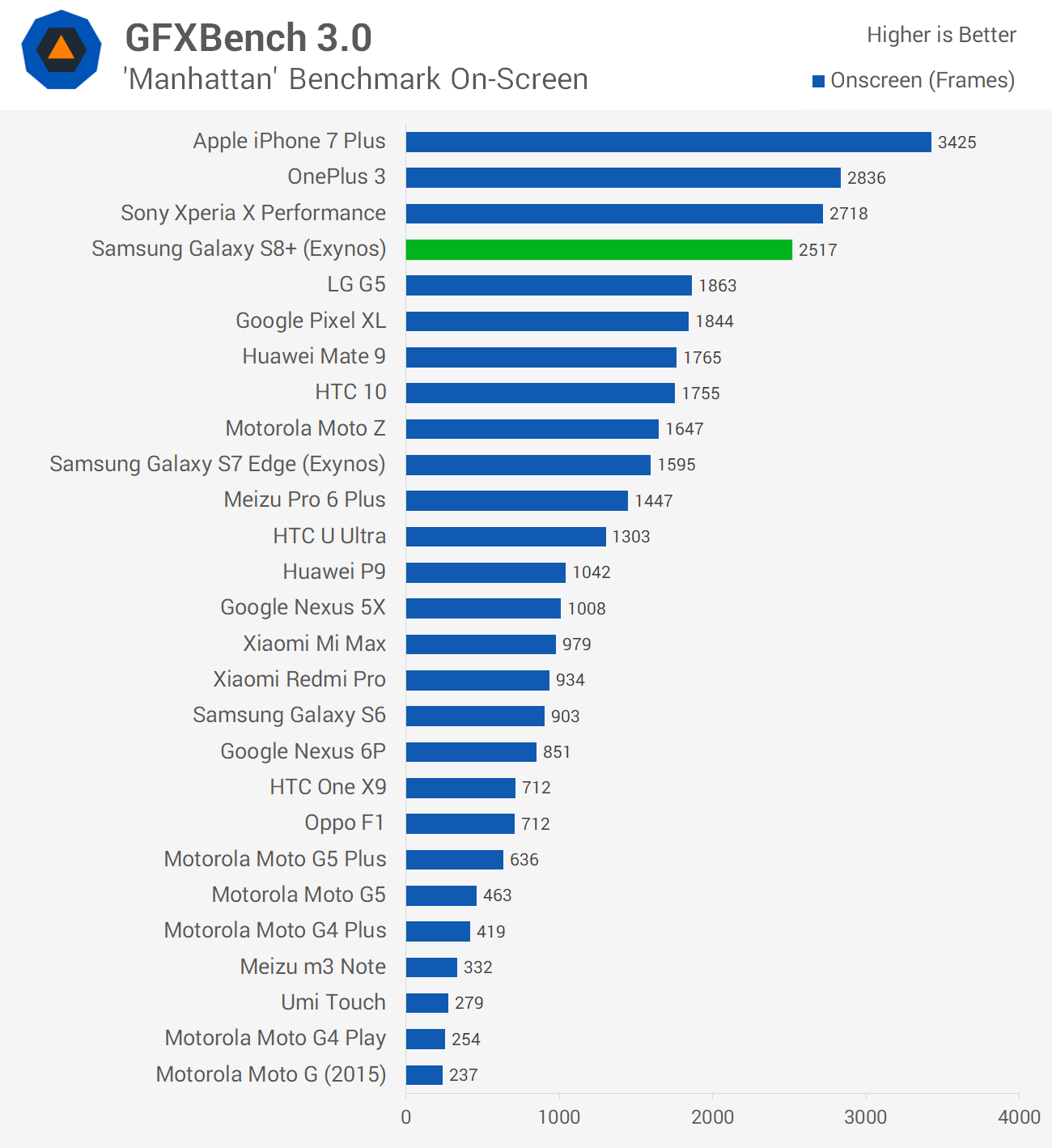
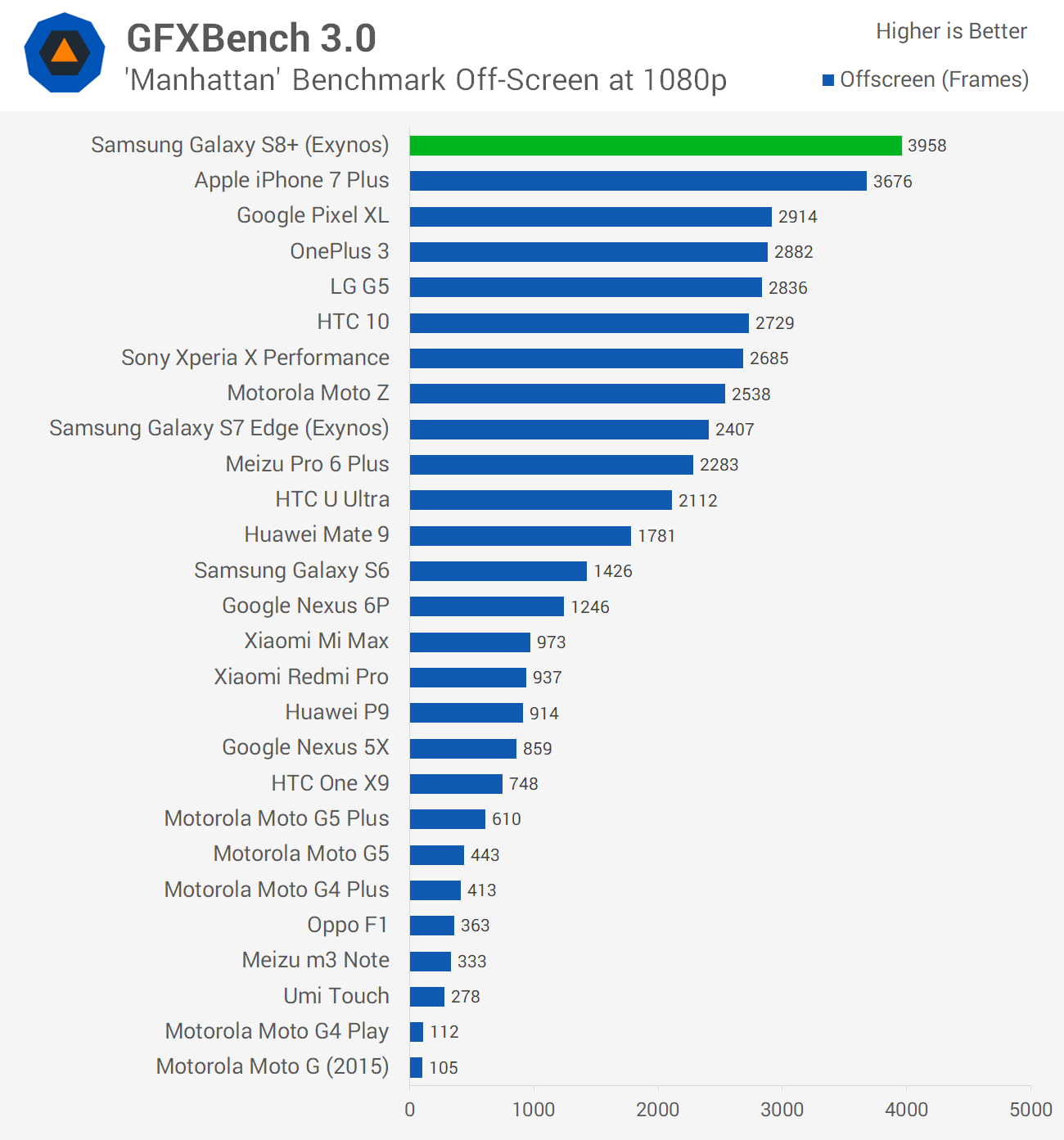
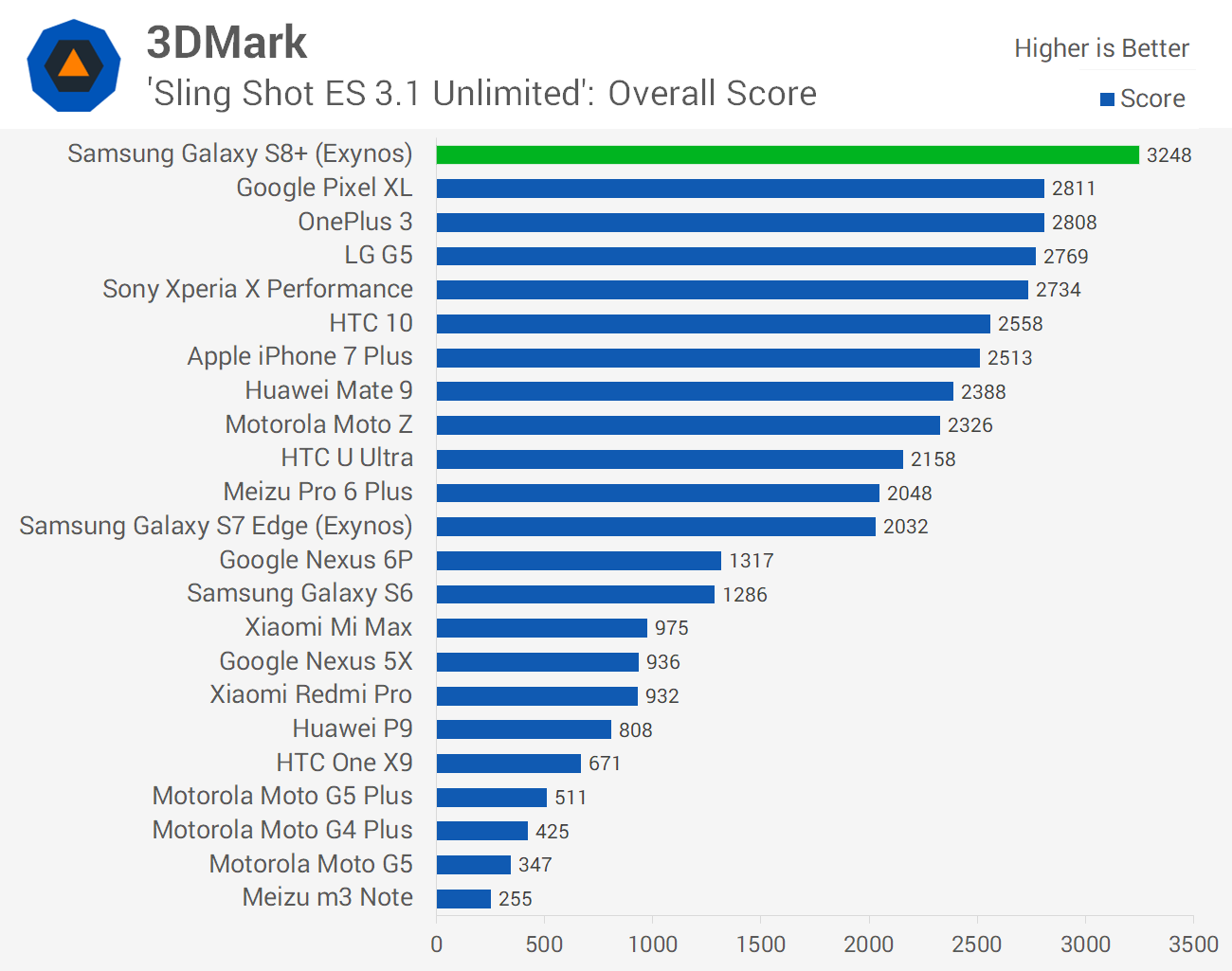
Samsung have really targeted GPU performance with the Exynos 8895 to accommodate their virtual reality goals and the increased resolution of the Galaxy S8+'s display. The Mali-G71 MP20 at its modest 546 MHz clock speed dominates most benchmarks, up to a certain point.
In terms of raw performance advantages, the Galaxy S8+ is 60 percent faster in GPU-limited workloads on average compared to the Galaxy S7 Edge. That's a massive performance improvement in a limited thermal and power envelope, assisted by the upgrade to a 10nm process. When looking purely at on-screen benchmarks, the S8+ still holds a 54 percent advantage over the S7 Edge despite its increased resolution.
Gains relative to the Snapdragon 821 are smaller, with the S8+ only beating the Pixel XL by 39 percent on average. I say "only" here, but that's still an impressive gain. And compared to the Huawei Mate 9's Kirin 960, which also uses a Mali-G71 GPU but only the MP8 variant at a higher clock speed, the S8+ pulls away by 32 percent on average. In fact the Galaxy S8+ is pretty much on par with the iPhone 7 Plus here in terms of GPU performance, and Apple's A10 SoC has a beefy GPU in it.
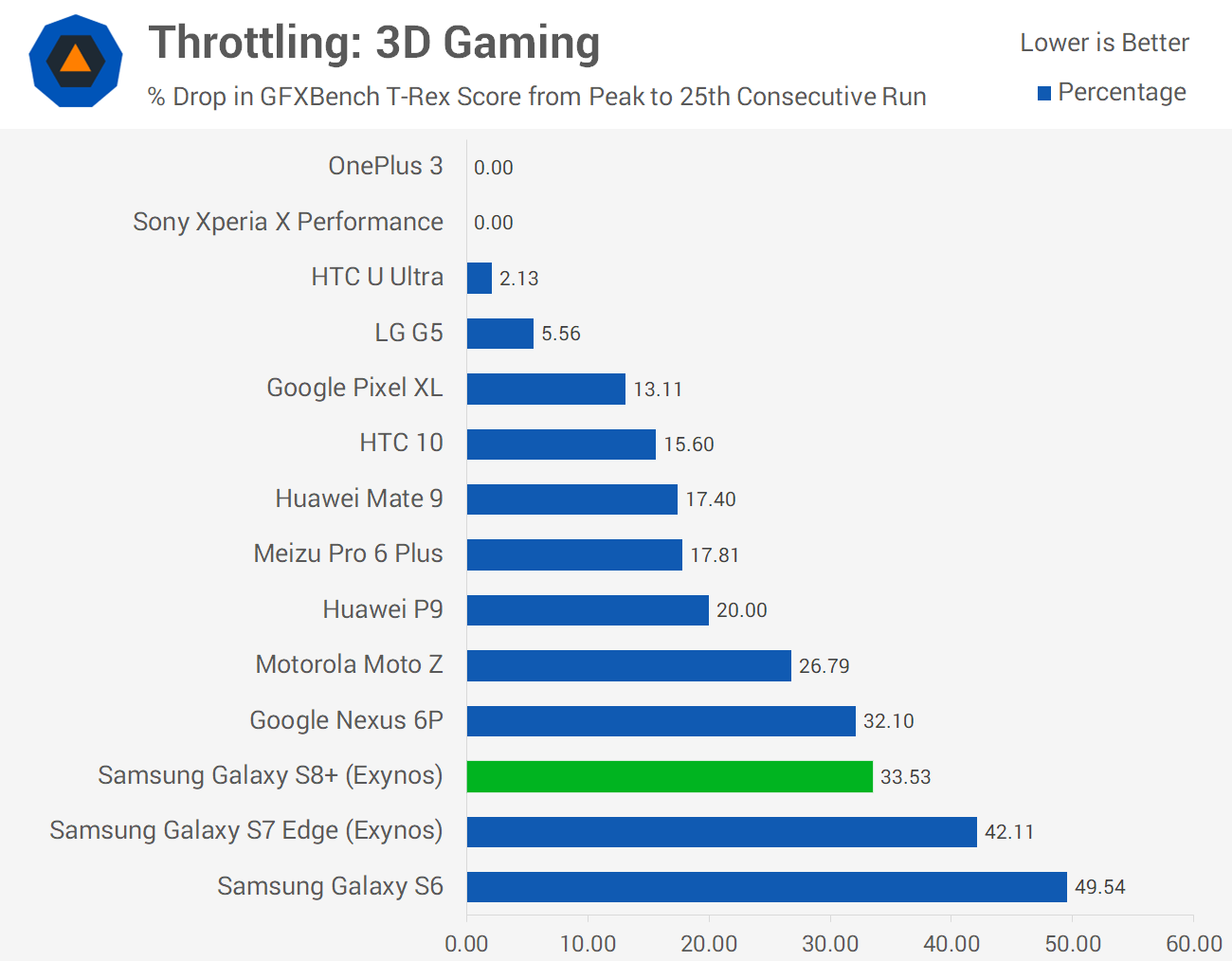
The downside to the Exynos 8895, and this has been an issue across most Exynos processors, is throttling. Exynos SoCs are the worst on the market in this regard, with the S8+ slowing by 43 percent after 25 minutes of gaming. This is on par with the Exynos Galaxy S7 Edge, while Snapdragon 821 SoCs tend to drop by a more modest 20 to 30 percent.
The good news here is that the Exynos 8895 in its throttled state is still faster than the Snapdragon 821 at an equivalent screen resolution, as it's starting from a higher peak level, though the gap is reduced significantly. Devices with 1080p displays like the Huawei Mate 9 and the OnePlus 3 are actually faster during long gaming sessions.
It'll be interesting to see how the Snapdragon 835 stacks up when I get hands on time with it.


The Galaxy S8+'s storage performance is an interesting one. The NAND used here is clearly faster than last year's in sequential tests, however it remains largely the same in random tests. This leads to great sequential NAND performance but only mid-tier (for a flagship) random performance. It'd be nice to see Samsung focus on arguably more important random performance in future devices.
